What is an Asphalt Roof Nail-Over?
Do you need a new roof? Are you concerned about paying for a full roof replacement? Instead of a roof replacement, you could consider getting a roof...
Installing a roof is a fairly complex process, and when you begin to break it down step by step, you start to realize that it’s not as straightforward as nailing some shingles to a roof.
At several steps along the way, you’ll discover that there are a lot of different opinions about what things should be installed, and even how those things should be installed.
One of these such debates about how asphalt roofs should be installed regards whether a roofer uses a nail gun, or a normal hammer, to affix the shingles to the roof. Many roofers swear that hand-nailing the roof with a hammer is the only way it should be done, and others feel the same about using a pneumatic air-nailer.
Though people have such strong opinions, believing that it has to be one way or the other, each method has its drawbacks, and benefits. Maybe that’s something we can learn about other areas of life too.
But for this blog, we’re going to break down:
Let’s get started!
We’ll start by talking about the most traditional method of roof installation, hand nailing the shingles to the roof using a trusty hammer and good, old-fashioned coordination.
The benefits of hand-nailing shingles primarily comes in the ability of an experienced contractor to more easily feel where each nail is placed, how firmly they are secured in the roof, and fix any errors. Hand nailing allows for the roofer to be more accurate in where they put the nails, and if they have been doing it a long time, can move through it pretty quickly.
The big caveat here is that hand nailing requires a more experienced contractor to do effectively.
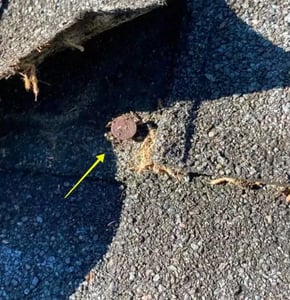
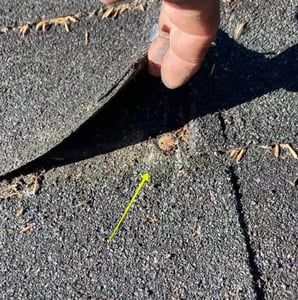 If you are working with someone who doesn’t have as much experience nailing a roof in, they may not know exactly how deep the nail should go, or what to do if they misplace one. These sorts of mistakes are pretty common with inexperienced roofers, and can lead to some issues later down the road.
If you are working with someone who doesn’t have as much experience nailing a roof in, they may not know exactly how deep the nail should go, or what to do if they misplace one. These sorts of mistakes are pretty common with inexperienced roofers, and can lead to some issues later down the road.
Additionally, a contractor than hand nails a roof may be more expensive than one using air guns, as they are likely more experienced, and may take a little bit more time to get everything done.
Next up, let’s discuss air-nailing, which is when a roofer uses a pressurized, pneumatic nail gun to power nails through the roof at the pull of a trigger.
The main benefit that comes from using a nail gun to secure shingles is from the speed and consistency that it offers. Air-powered nail guns can be operated at a faster rate than most humans can. When the trigger is pulled, a blast of air shoots the nail into the roof, and a new one is immediately loaded up and ready to fire. This reduces the likelihood for dropping nails during the process, and decreases the risk of a roofer hitting their fingers when nailing the shingle down.
Despite the nail gun being theoretically easier to use than straight up manual nailing, it does have its own set of challenges that need to be learned before it can be used effectively. First, your roofer needs to know how to adjust the gun to use the right amount of air pressure so that the nails are driven in properly the first time. Also, they need to be aware of how much kick the gun is going to have. If not, they may not be prepared to handle it, and if they are using it too fast, may miss the mark on where they need to nail the shingle down.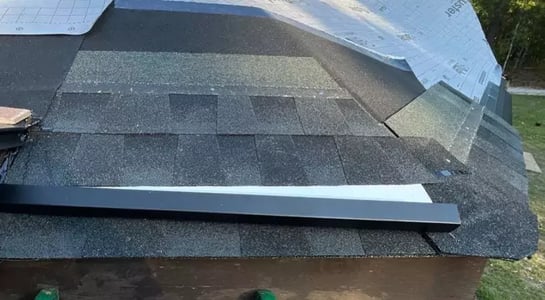
In general, if you are using contractors who are experienced and good at their job, both will be pretty accurate, and can do the job well.
The roofer who hand nails will have a better feel for where the nail ends up, and have more control over it, while the roofer using the nail gun will have a consistent nail, as long as the gun is set correctly, and it is being used properly.
The accuracy section though, goes to the hand-nailing method, because the control it offers is simply too helpful for experienced roofers over the nail gun.
Surprisingly, the speed difference between these two is less than you might think.
An air nail gun speeds up the process of having a nail ready to be hit and eliminates a lot of the risk of dropping nails, hitting fingers, and other unfortunate occurrences that slow down installation.
However, roofers with a lot of experience hand nailing can lay down a shingle shockingly fast, especially if they have learned faster techniques, and have tools that assist them with it, like a hammer that magnetically holds up the nail.
Even still, the nail gun, when used by an experienced roofer, is going to be faster than a hand nailing roofer, so this section goes to the nail gun.
This part will depend on if you are talking about the cost for the roofing contractor, or the homeowner purchasing the roof replacement.
If you’re talking about the cost for a roofing contractor, hand nailing will be far less expensive, as It doesn’t require nearly as much equipment as air nailing does. To use the nail gun, you also need the air compressor, a power source, the nail gun itself, and the coils of nails, which are usually more expensive than the loose nails are.
However, if you are providing an estimate for a homeowner, using a crew that hand nails a roof is likely going to be a little bit more expensive than using one that uses a nail gun. The reason for this is that the crew that hand nails is typically more experienced, and will likely charge a little bit more as a result.
As we discussed earlier, both nailing methods have their merits, and demerits, but ultimately, what is most important is finding a contractor with experience.
If you go with someone who has a lot of experience on the roof, they’ll have the knowledge and techniques necessary to get the job done right, regardless of what their preferred nailing tool is. On the other side of that coin, someone without much experience may not know the right way to hand nail, or rush themselves with the air nailer, and you may end up having to file a warranty claim if things don’t go the right way.
So while this debate is still worthwhile, and it will continue on within the roofing community, at the end of the day, it isn’t the most important question to be asking your roofing contractor.
If you want to learn some questions that ARE worth asking, give our blog on that topic a look!
On Tops Roofing has been replacing and repairing roofs in the Raleigh, NC area since 1991, and with over 15,000 roofs replaced, we’ve got the experience to handle whatever comes our way!
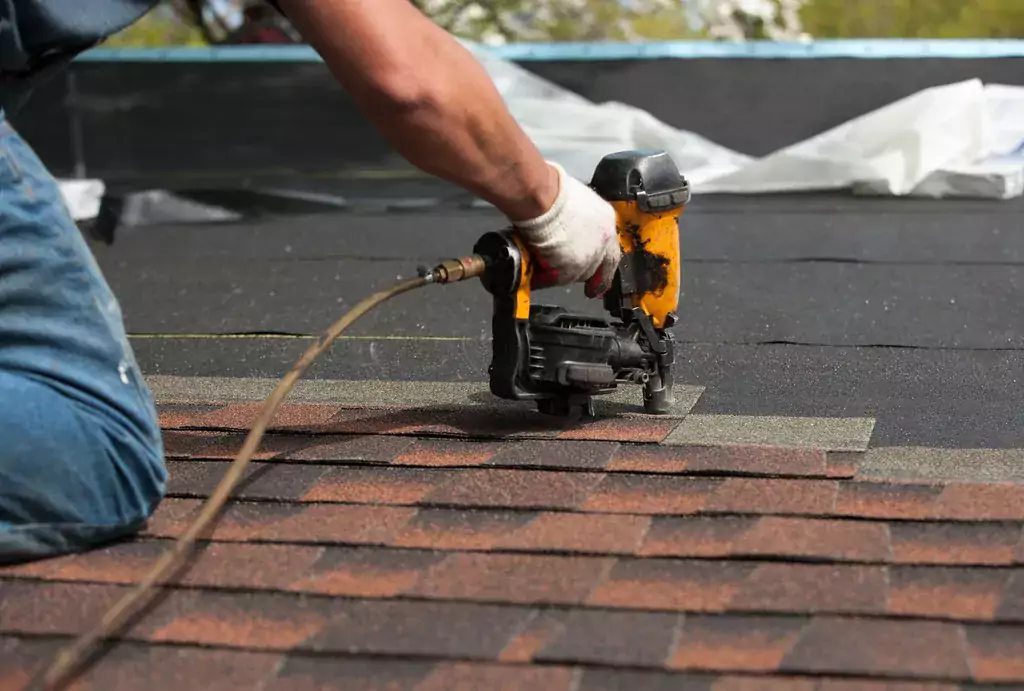
Do you need a new roof? Are you concerned about paying for a full roof replacement? Instead of a roof replacement, you could consider getting a roof...
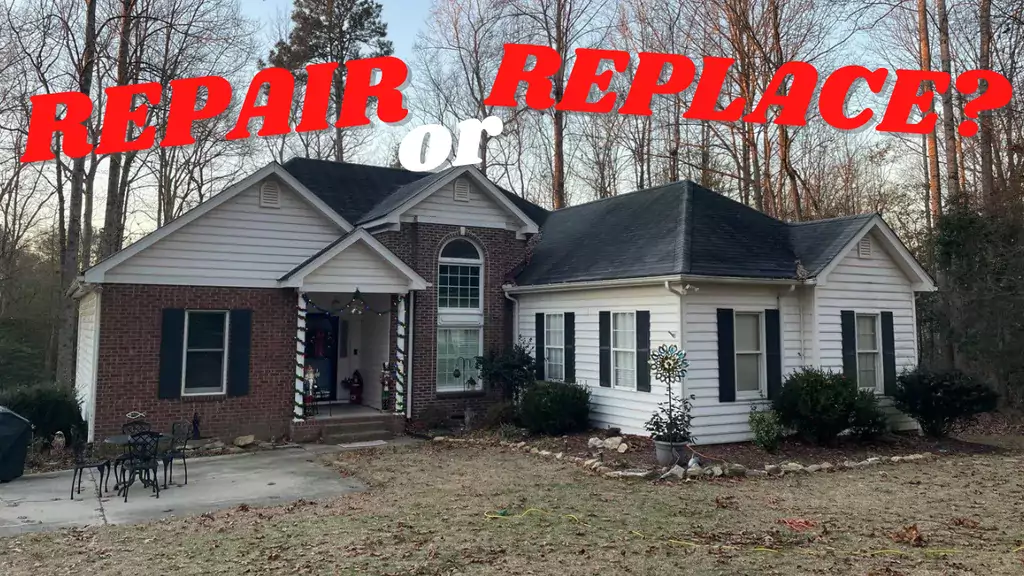
If you’ve received some roof damage, you’ll likely get in touch with a roofing company and have them inspect the roof. They should present you with...
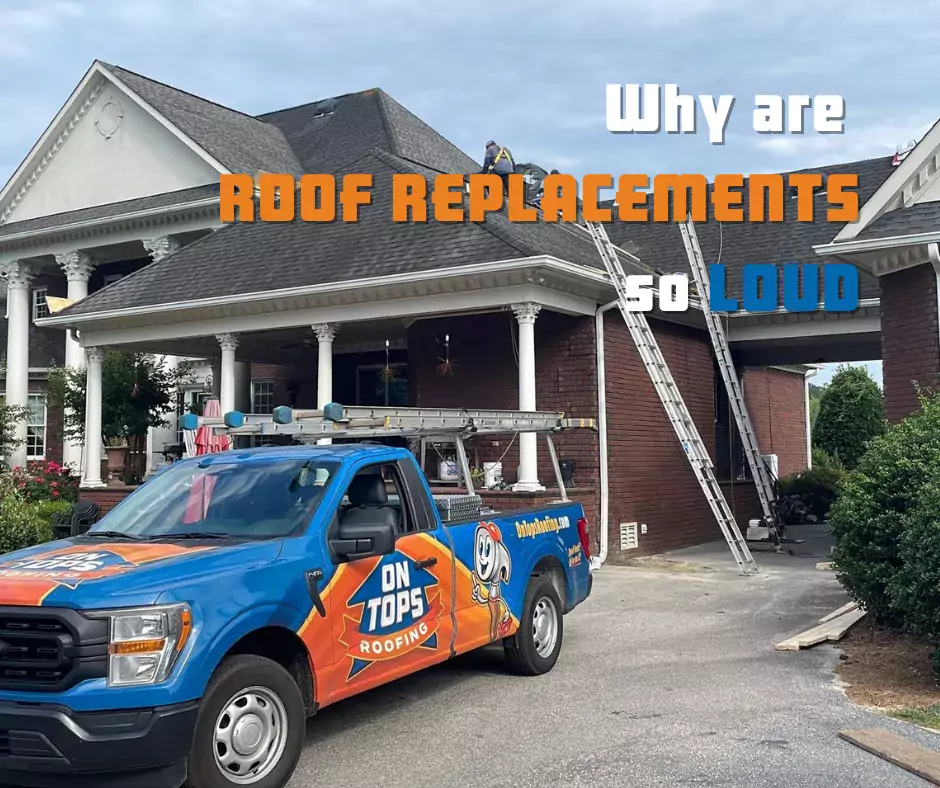
After receiving the question, "How much is it going to cost?" from homeowners, the next common concern is often about the noise level during a roof...